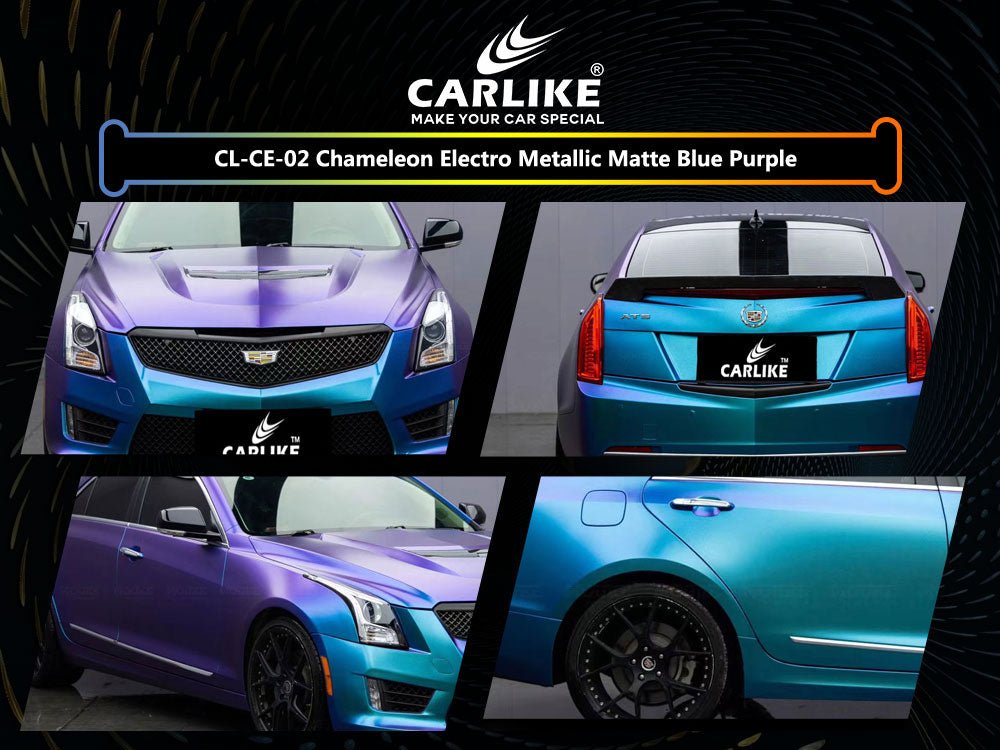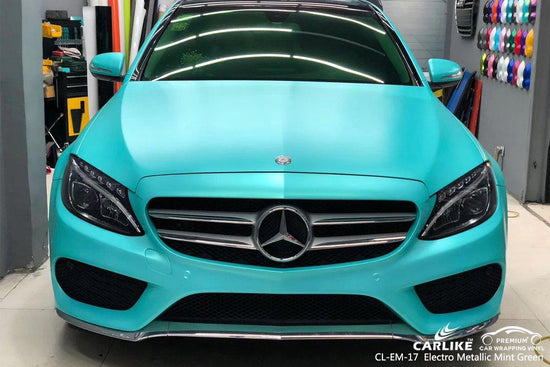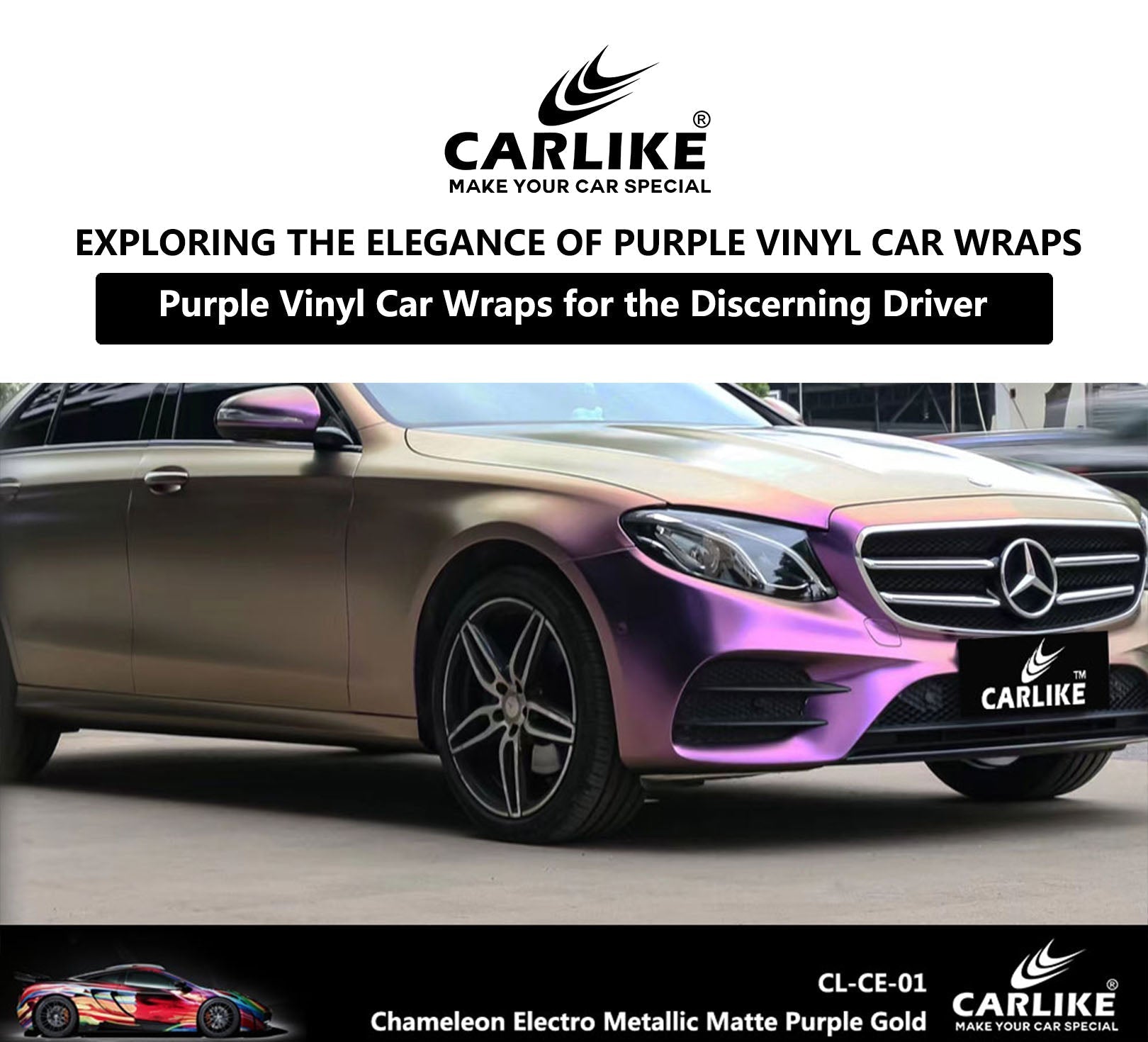Step-by-Step Guide
Materials Needed:
-Heat gun or hair dryer
-Plastic razor blade or vinyl wrap removal tool
-Adhesive remover or rubbing alcohol
-Microfiber cloths
-Warm water and mild soap (optional)
-Protective gloves and eyewear
Step 1: Gather Your Materials
Collect all the necessary materials listed above to ensure you have everything on hand before starting the process.
Step 2: Prepare Your Work Area
Park your car in a well-ventilated area, preferably outdoors. Ensure there's enough space around the vehicle for easy access.
Step 3: Heat the Vinyl
Using a heat gun or hair dryer on low to medium heat, warm up a section of the vinyl wrap. Hold the heat source about 6-8 inches away from the surface and continuously move it in a sweeping motion.
Step 4: Start Peeling
Once the vinyl wrap is warm and pliable, use a plastic razor blade or a vinyl wrap removal tool to gently lift a corner of the wrap. Hold the blade at a slight angle to avoid scratching the underlying surface.
Step 5: Continue Peeling
Gradually peel off the vinyl wrap, keeping the heat source nearby to reapply heat as needed. Pull at a 45-degree angle to the surface, working slowly to avoid tearing the wrap.
Step 6: Remove Adhesive Residue
After the wrap is removed, you'll likely have adhesive residue left on the surface. Apply adhesive remover or rubbing alcohol to a microfiber cloth and gently rub the residue in a circular motion. Take care not to apply too much pressure.
Step 7: Clean the Surface
If there are any remaining traces of adhesive, clean the surface with warm water and mild soap. Rinse thoroughly and allow it to dry.
Step 8: Inspect for Damage
Check the underlying paint or finish for any signs of damage. If you notice any, you may need to perform some touch-up work.
Step 9: Repeat Steps as Necessary
Continue steps 3 through 8 until all the vinyl wrap is removed from the desired areas.
Step 10: Final Inspection
After completing the process, inspect your car to ensure all remnants of the vinyl wrap and adhesive are completely removed.
Conclusion:
With patience and care, you can successfully remove vinyl wrap from your car, revealing a clean surface ready for a new look or finish. Remember to take your time and follow each step diligently to achieve the best results.





Choosing the Right Time to Remove Vinyl Wrap
Ideal conditions and temperatures play a crucial role in ensuring a smooth and efficient vinyl wrap removal process. Here are some key considerations:
1. Temperature Range: The temperature range for optimal vinyl wrap removal is typically between 60°F (15°C) and 80°F (27°C). This range allows the adhesive to become more pliable without being too brittle or too soft.
2. Avoid Extreme Temperatures: Avoid working in extreme cold or hot conditions. Extremely low temperatures can make the vinyl wrap brittle and prone to tearing, while high temperatures can make the adhesive overly soft and challenging to work with.
3. Dry Environment: It's important to work in a dry environment. Moisture can affect the adhesive properties of the vinyl wrap, potentially making it more difficult to remove cleanly.
4. Avoid Direct Sunlight: If possible, choose a shaded area or work indoors. Direct sunlight can significantly increase the temperature on the surface of the car, which may lead to uneven removal or damage to the vinyl.
5. Time of Day: If working outdoors, consider the time of day. Early morning or late afternoon tend to be better times when temperatures are more moderate.
6. Heat Gun or Heat Source: If the temperature is below the ideal range, you can use a heat gun to gently warm the vinyl. Be cautious not to apply too much heat, as this can cause the vinyl to become too soft and potentially damage the underlying paint.
7. Avoid Windy Conditions: If you're working outdoors, try to choose a location that is sheltered from strong winds. Wind can make it difficult to control the vinyl and can also cool the surface of the car.
8. Preparation is Key: Before starting the removal process, ensure that the car's surface is clean and free from any debris, dirt, or contaminants. This will make the process smoother and prevent any unwanted scratches or damage.
9. Patience and Care: Even under ideal conditions, it's important to approach the removal process with patience and care. Take your time, especially around edges and tight curves.
10. Use Proper Techniques: Employing proper techniques, such as using consistent, controlled pressure and pulling the vinyl at a low angle, will help ensure a clean removal.
By following these guidelines, you'll create the best conditions for a successful vinyl wrap removal process, minimizing the risk of damage to the underlying surface and achieving a clean, professional result.
Common Mistakes to Avoid
Here are some common mistakes people make when removing vinyl wrap and how to prevent them:
1. Insufficient Heating: Not applying enough heat to the vinyl wrap can make it more difficult to remove. Use a heat gun or a heat source to warm up the vinyl evenly before attempting to peel it off.
Prevention: Keep the heat gun at a moderate temperature and maintain a consistent distance from the vinyl. Move the gun in a sweeping motion to distribute the heat evenly.
2. Using Excessive Force: Pulling too hard or using excessive force when removing the vinyl wrap can lead to paint or surface damage.
Prevention: Gently lift the edge of the vinyl wrap and use steady, controlled movements. If the wrap is not coming off easily, apply more heat before trying again.
3. Neglecting Adhesive Residue: Failing to remove all adhesive residue can result in a messy finish or even damage the paint underneath.
Prevention: Use an adhesive remover or a solution of warm, soapy water to clean off any leftover adhesive. Ensure the surface is thoroughly clean before proceeding.
4. Working in Poor Conditions: Attempting to remove vinyl wrap in extreme temperatures, high humidity, or strong winds can hinder the process.
Prevention: Choose a day with mild weather conditions. Ideally, work in a shaded area to avoid the vinyl becoming too hot or too cold.
5. Skipping Surface Preparation: Neglecting to clean and prepare the surface properly before starting the removal process can lead to complications.
Prevention: Wash the car thoroughly to remove any dirt or debris. Use a mild detergent and ensure the surface is completely dry before proceeding.

6. Rushing the Process: Trying to remove vinyl wrap too quickly can result in tears or damage to the material.
Prevention: Take your time and work methodically. Focus on small sections at a time, ensuring the vinyl is heated adequately before attempting removal.
7. Not Protecting Adjacent Surfaces: Failing to mask off or protect adjacent areas can lead to accidental damage or scratches.
Prevention: Use masking tape or plastic sheeting to cover any areas that are not being worked on. This will provide an added layer of protection.
8. Ignoring Safety Precautions: Neglecting to use proper safety equipment, such as gloves or eye protection, can result in injuries.
Prevention: Always wear appropriate safety gear to protect yourself during the vinyl wrap removal process.
9. Using Incorrect Tools: Using sharp or abrasive tools to remove the vinyl wrap can damage the underlying surface.
Prevention: Use tools specifically designed for vinyl wrap removal, such as plastic or rubber squeegees, and avoid using sharp objects.
By being aware of these common mistakes and taking the necessary precautions, you can ensure a smooth and successful vinyl wrap removal process.
FAQ for remove vinyl wrap from car?
Q: Can I remove vinyl wrap from my car by myself?
A: Yes, you can remove vinyl wrap from your car yourself, but it's important to follow proper techniques and have the necessary tools.
Q: What tools do I need to remove vinyl wrap from my car?
A: You will need a heat gun or a heat source, a plastic or rubber squeegee, an adhesive remover, clean microfiber cloths, and possibly a plastic razor blade.
Q: How do I heat the vinyl wrap for removal?
A: Use a heat gun set at a moderate temperature and maintain a consistent distance from the vinyl. Move the gun in a sweeping motion to distribute the heat evenly.
Q: What if the vinyl wrap is not coming off easily?
A: Apply more heat to the area and try again. Avoid using excessive force, as it can damage the paint underneath.
Q: How do I remove adhesive residue after taking off the vinyl wrap?
A: Use an adhesive remover or a solution of warm, soapy water to clean off any leftover adhesive. Ensure the surface is thoroughly clean before proceeding.
Final Words
In conclusion, giving your car a fresh start by removing old vinyl wrap can breathe new life into its appearance. By following the steps outlined in this guide, you'll be equipped with the knowledge and techniques to safely and effectively remove the wrap without causing harm to the underlying paint. Remember to exercise patience, use the right tools, and prioritize safety throughout the process. With a bit of effort and care, you'll unveil the true beauty of your vehicle, ready to embark on a new chapter in style. Here's to reviving your ride and enjoying the renewed allure it brings!








